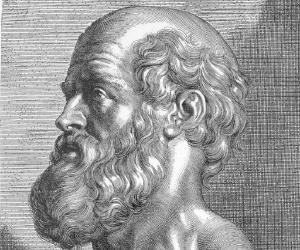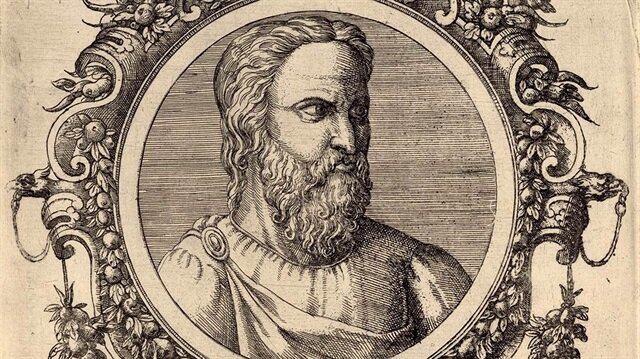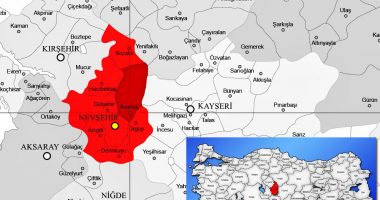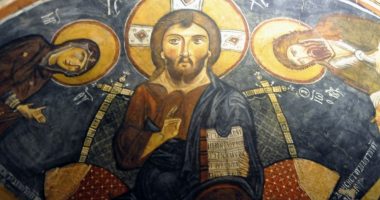Table of Contents
Aretaeus Of Cappadocia; It can not be said that Aretaeus, who is estimated to have lived in the 2nd century, was a physician who was mentioned a lot in his own age. His views only found their place depending on the development of medicine after the 16th century and caused him to gain a reputation as a physician. This shows us that he was a medical scholar far ahead of his time. Aretaeus has a superior intelligence. The approaches and definitions he put forward in different subjects of medicine are still used today and are shown among the foundations of modern medicine.
You may be interested: Cappadocian Fathers
The Life of Aretaeus
Aretaeus Of Cappadocia; Unfortunately, we know very little about the life of the medical scholar Aretaeus, who is thought to have been born and lived in the vicinity of Goreme. Many sources identify him as of Greek origin, as he lived during the Roman period. However, Aretaeus is an Anatolian physician from Cappadocia. There are different dates in different sources about the years he lived. FH Garrison, in his book “History of Medicine” dated 1913, gives the birth and death dates of the famous physician as 130-200. It is known that Aretaeus studied medicine in the famous city of Alexandria in Ancient Egypt and practiced medicine in Rome.

Works of Aretaeus
Aretaeus Of Cappadocia; 4 of the physician’s books written in a very clean Ionian dialect have survived to the present day. His books bear the names of the symptoms, causes and treatments of acute and chronic diseases. The first translation of the books into Latin was made in Venice in 1552. Thanks to these books, many of which were translated in the following years, information about the medical knowledge and medicine of Aretaeus, who became famous as the “golden monument of medicine”, was reached.
Aretaeus Of Cappadocia; The importance of Aretaeus as a physician was to follow clinical methods such as listening to the patient’s problems with great care, investigating the causes, and determining the ways of diagnosis and treatment, at a time when diseases were explained with supernatural powers and tried to be cured with magic in paganist (polytheistic) Rome. In this sense, it can be said that Hippocrates, who lived 600 years before himself, continued the style of the school he founded.
Contributions of Aretaeus to Medical Science
Aretaeus Of Cappadocia; Considering that Hippocrates, who is considered the founder of medical science, is the person on whose behalf those who have just started the profession of medicine today take an oath, it is natural that Aretaeus followed in his footsteps. However, when Aretaeus’ style is examined, it can be understood that he used his old and new medical approaches by combining them in his own way.
It is possible to see the ideas of Hippocrates, the classification of diseases of the methodical and some basic approaches of pneumatics in Aretaeus. Aretaeus’ contributions to medical science are too great to be described here. We think we will be able to perceive this ancient physician better if we give brief information about some of them that we consider important.
It can not be said that Aretaeus, who is estimated to have lived in the 2nd century, was a physician who was mentioned a lot in his own age. His views only found their place depending on the development of medicine after the 16th century and caused him to gain a reputation as a physician.
Diabetes
Aretaeus Of Cappadocia; The first person to use the word diabetes and bring it to the medical dictionary is Aretaeus. “Diabetes” is a word meaning to flow away, to go beyond. Diabetes mellitus, the most known symptoms of which are manifested by drinking a lot of water and urinating frequently, is characterized by excessive elevation of blood sugar and increased sugar in the urine due to the decrease or absence of insulin hormone. In advanced stages, it can cause many diseases and deaths, from blindness, kidney failure, susceptibility to inflammatory infections, arteriosclerosis and paralysis.
Aretaeus Of Cappadocia; The definition that Aretaeus brought to diabetes shows that he understood the disease very well. While describing this disease, the Cappadocian physician says, “…it is the watering of the flesh and the limbs into urine”. According to him, people with this disease “can never get enough of drinking water and can’t save themselves from urinating. Because fluids flow out of his body by filtering. Kidneys, bladder and urinary tract are like wide open canals.
Aretaeus says that for those afflicted with this disease, “death is inevitable following weakening.” The connection of diabetes with insulin from pancreatic secretions was understood in 1889. Insulin was discovered in 1921, and in 1964 insulin was synthesized and started to be used in diabetics.

Migraine
Aretaeus Of Cappadocia; Migraine, which we can briefly describe as a half-headache, is sometimes seen as very simple and bearable pain, but it often presents a clinical picture that is very painful and shows many symptoms along with it. The most important of these are visual, speech and hearing disorders caused by the effect of a part of the brain during pain. The disease known as migraine is one of the oldest known diseases in human history. It was determined that migraine was mentioned for the first time in a text written on papyrus in Egypt in 1200 BC. Hippocrates defined migraine.
Aretaeus Of Cappadocia; However, the oldest scientifically accepted definition of migraine belongs to Aretaeus of Cappadocia. Aretaeus defined migraine as headache occurring on one side of the head, accompanied by nausea, weakness, dizziness, and intolerance to sunlight. About 50 years after Aretaeus, he used the word “hemigranea”, meaning “half of the skull”, for this disease. This word has become “migraine” over time.
Mania and Melancholy
Aretaeus Of Cappadocia; Hippocrates was the first to define the concepts of mania and melancholy (depression), which appear as a psychological illness. Aretaeus, on the other hand, determined that mania and melancholy are two different states of the same disease. Aretaeus was the first to show the circular feature of mania and melancholy.
This view forms the basis of today’s concept of bipolarity. In addition, Aretaeus emphasized that aggression plays a certain role in melancholia, that this aggression is associated with suicide, and said that mania is not always the result of melancholy. Bipolar disorders are defined as a chronic disease that can be seen as recurrent manic and depressive or a combination of both without a certain pattern and during these transitions, the person can return to a completely healthy state.
Exercise-Induced Bronchospasm
Aretaeus Of Cappadocia; This situation, which occurs especially in people who do sports, can be simply defined as shortness of breath that develops after exercise. Aretaeus was the first to describe the relationship between exercise and the development of acute airway narrowing. Long after Aretaeus, in 1966 Mc. Neil et al. have identified this condition as a medical phenomenon. Accordingly, the disease clinically begins with the complaint of bronchospasm immediately after the end of exercise and reaches its peak in approximately 8-15 minutes.
Tracheotomy
Aretaeus Of Cappadocia; Tracheotomy is the surgically made openings in the anterior wall of the trachea in order to provide an airway when necessary. People who saw that death occurs with the end of breathing understood the importance of keeping the airway open.
The first scientific record of tracheotomy was made by Asclepidias in 100 BC. About 250 years later, Aretaeus reported that this method was inaccurate and determined that a hole opened in the trachea would not close by itself. Antyllus, who came after him, determined where and how the hole could be closed in the light of this view. The method still used today is the method of Antyllus.
Celiac Disease
Aretaeus Of Cappadocia; It can be defined as an intestinal disease related to the immune system caused by a protein called gluten, which is found in foods such as wheat, barley, oats and rye. Inflammation develops in the intestine and the intestine cannot absorb some nutrients and mix them into the blood. The Cappadocian physician Aretaeus, who first described this disease and named it “koilliakos”. Francis Adams, who translated Arateaus’ book from Greek to English in 1856, translated the word “koilliakos” as “celiac”. Later, the name “celiac” was used to describe this disease.









